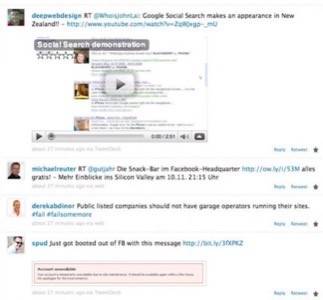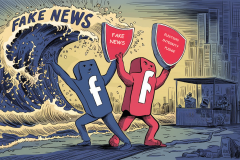Brizzly wants to be to microblogging what Blogger.com was to blogging five years ago. Currently, Brizzly offers a user-friendly browser-based interface for Twitter and Facebook. The Facebook integration went live today and more social media applications will be added as the product evolves. Brizzly was founded by Jason Shellen, one of the original developers of Blogger (acquired by Google in 2003).

Currently Brizzly is in private beta, but ReadWriteWeb has scored 2000 invites for our readers to test it out! (see the bottom of this post for the code).

Features, Including New Facebook Support
Brizzly is a self-described “social media reader.” It’s a browser-based service, like Blogger.com. Today Brizzly added Facebook as the second service it supports, after Twitter. Facebook users will be able to view and update their status, wall posts, comments and likes using Brizzly.
Brizzly is similar to Twitter clients such as TweetDeck, Seesmic and PeopleBrowsr (not all of them currently support Facebook though). However power users won’t see much reason to switch, as Brizzly doesn’t have the advanced features of those products. And that’s the point.
The feature set of Brizzly aims to make microblogging a simple and seamless experience for users. For example instead of having to click links to view media such as photos and videos, Brizzly puts those items inline in the user’s stream. Another example: Direct Messaging via Twitter has a UI (user interface) very similar to Instant Messaging, which many mainstream users will be familiar with.

Brizzly in 2009 = Blogger in 2003
Brizzly shares much of the same philosophy as Blogger. It’s simple to use and aims to make microblogging easy to understand and use by a mainstream audience. This seems like a great strategy. Back in 2003, blogging was at a similar stage in its adoption as microblogging is today – passionately used by early Internet adopters, but not fully understood by a wider audience.
The popular Twitter clients circa 2009 include TweetDeck, Seesmic and PeopleBrowsr. Those are great apps and no self-respecting Web geek would be caught without at least one of them. However it’s unlikely that your brother or sister, let alone Mom or Pop, is using those products. Brizzly wants to be the service that introduces your family and friends to the world of microblogging and social media.
Jason Shellen, who RWW readers may also recognize as a creator of Google Reader, was at The ReadWrite Real-Time Web Summit in October. Jolie O’Dell interviewed him about about filtration and discovery on the real-time web. Shellen mentioned that mainstream users probably won’t use hashtags to tag their tweets. He noted (at about the 3 minute mark in the video) that “most people are not going to do that [hashtags], so it needs to evolve into a different type of filtration.” One of Brizzly’s goals is to make hashtags and other “geeky” social media concepts simple for mainstream users to understand.
Less Noise
Regular people often struggle to see the value in Twitter and other social media apps. Web app developers need to find ways to convince people that behind the noise of social media, there is tremendous value.
So how does Brizzly compare to the now Facebook-owned FriendFeed, an aggregation service that early adopters love but most others think is information overload? I spoke to Jason Shellen at the RWW Summit about that. He told me that Brizzly won’t blend services together like FriendFeed. It will keep them separate (Twitter, Facebook, other services that are added over time), in order to maintain simplicity.
Conclusion
All in all, we’re impressed by the vision of Brizzly and we think it has a good chance of hitting the same wide user base that Blogger.com so successfully tapped. It’s fair to say that power users will probably be a little disappointed by Brizzly – but you’re not the target audience.
INVITE CODE: ReadWriteWeb readers can access the private beta of Brizzly by signing up using the code “rwwsentme” or clicking here. There are 2000 invites available.










